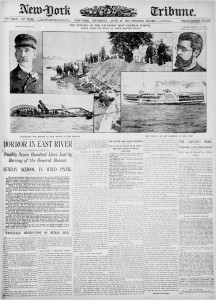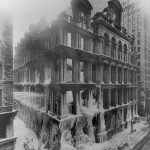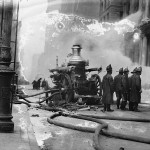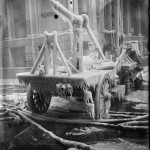Catherine Connelly & Adella Wotherspoon, General Slocum Survivors, Lived To Ages 109 & 100
The Story of The General Slocum Steamship Disaster
June 15, 2014 marks the 110th anniversary of what had been New York’s biggest disaster and loss of life until the September 11 attacks occurred. We think it is worth remembering the ill-fated General Slocum steamship fire. Here is the story of the General Slocum and a brief summary of the lives of the last two survivors of the disaster who amazingly lived into the 21st century.
A Beautiful Day For A Picnic
“Kleindeutchland,” as the area of Little Germany was called on the lower east side, was bounded approximately by the East River and Third Avenue and stretched from Houston Street to about 23rd Street. It was a working class, close-knit community of laborers and business owners. The German families that lived in this neighborhood made Tompkins Square Park their center for congregating and relaxation. But for special occasions they would embark on a trip to get out of the city.
Wednesday, June 15, 1904 was a sunny day and the members of the Sunday School of St. Mark’s Evangelical Lutheran Church at 323 E. 6th Street were looking forward to a day filled with games, music and a large picnic for their 17th annual excursion to bucolic Locust Grove, Long Island.
To get there, the church had chartered a steamship built in 1891, the three decked white paddle-wheeler, General Slocum.
Sudden Disaster
The General Slocum was filled with around 1,400 passengers, mostly women and children as the men generally had to work on a weekday. The Slocum headed out from its berth at 3rd Street on the East River at about 9:30 am with a band playing and the passengers joyously celebrating the smooth ride and beautiful weather.
Thirty minutes after setting out, the ship caught fire Continue reading













